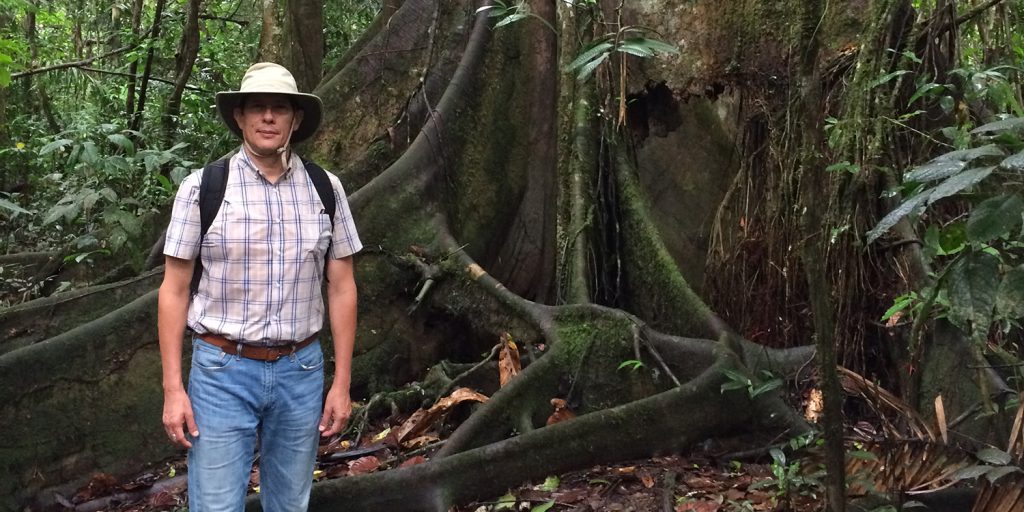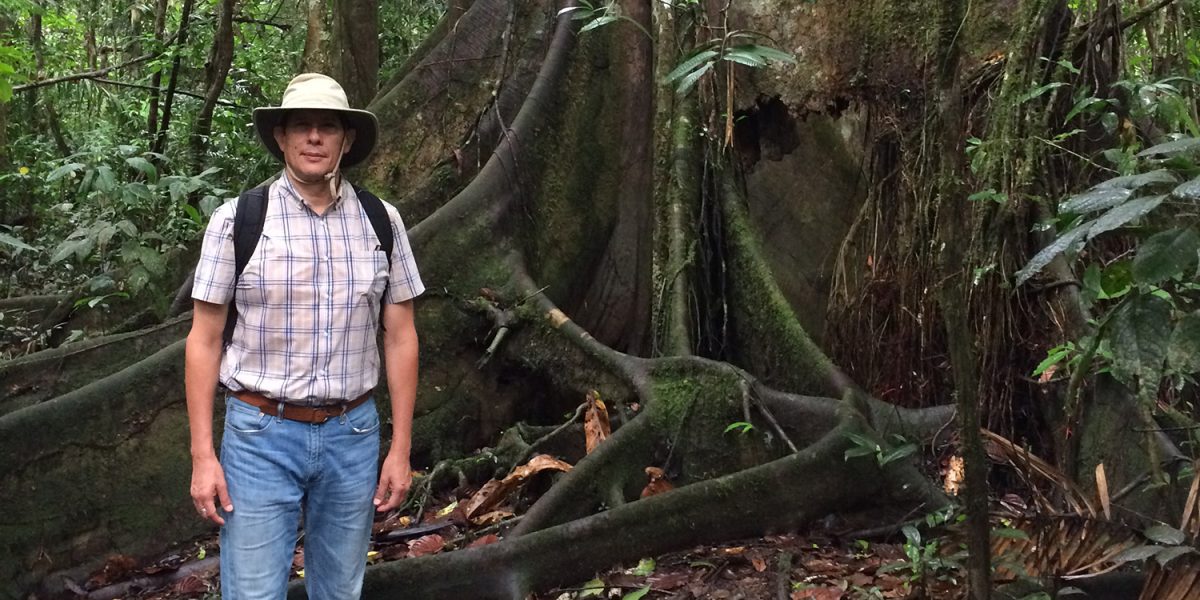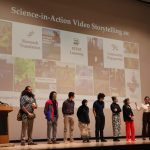
RCEI affiliate and Professor Jorge Marcone introduces his students to the little-known figures on the front lines of global environmental conflict: Rainforest dwellers in Peru fighting to protect their land from industry. Indigenous and white families in Canada standing up to Big Oil. Women across five countries taking the lead to protect the environment.
At first glance, his course at Rutgers University-New Brunswick—”Our World: Social Justice and the Environment”—might seem like an elective in global politics, geography, or cultural anthropology.
But Marcone, an associate dean of humanities in the School of Arts and Sciences, is a literary scholar who makes environmental issues—especially in the Amazon region—a central part of his teaching and research.
His course is an example of environmental humanities, an emerging movement that’s steeped in literature and the arts but committed to securing a place at the table with the scientists, policymakers, and activists engaged with solving environmental problems.
“The mission of environmental humanities is to understand the values, beliefs, and narratives involved in the creation of environmental problems as well as the transformations needed to get out of them,” says Marcone, a professor of Spanish and Portuguese and comparative literature. “Those solutions are not going to come from one discipline or approach, so that means working with others—scientists, artists, and local communities.”
He is hardly alone. Many other schools are moving in similar directions, from the University of Pennsylvania’s Penn Program in Environmental Humanities to Arizona State University’s Environmental Humanities Initiative.
At Rutgers, Marcone is modeling the interdisciplinary ethos of environmental humanities through collaboration with other Rutgers schools. This year he joined forces with colleagues from the School of Environmental and Biological Sciences (SEBS) and the Mason Gross School of the Arts (MGSA) to offer Rutgers–New Brunswick undergraduates a new minor, Creative Expression and the Environment.
Students in the minor learn about environmental issues as they explore and develop their skills in a range of creative fields—art and design, media, writing, dance, filmmaking, music, or theater—and apply those skills toward building empathy, engagement, and awareness around environmental issues.
The minor was developed by Mary Nucci, a professor of human ecology in SEBS, in collaboration with Marcone and Rebecca Cypess, a professor of music at Mason Gross.
In an essay for NJ.com, the three faculty members wrote that science alone can’t solve climate change.
“The arts and humanities have the capacity to engage, promote reflection and empathy, demonstrate care, and inspire action,” they wrote. “Through them, the minor will empower students to imagine and help to build a future that is rooted in environmental knowledge and the quest for environmental sustainability and justice.”
SAS sophomore Amillia Keagle, who signed up for the new minor, hopes that the future will bring similar programs, such as environmental sociology.
“The climate crisis is going to affect every one of us, whether we want to face it or not,” says Keagle, a journalism and media studies major who brings a passion for photography to her environmental activism. “What I like about environmental humanities is the way it brings together the science, the policy, and the activism with the storytelling.”
In Marcone’s class, which is required for the minor, students get a particularly eclectic range of storytelling, everything from a Bolivian indigenous feature film to the journalistic writings of Nigerian activist Ken Saro-Wiwa to readings from Naomi’s Klein’s “This Changes Everything.”
Marcone said the course strives to let Indigenous people speak for themselves, and as a result, the stories are not necessarily narratives of imminent destruction or victimization. They also demonstrate resilience, self-awareness, and surprisingly successful activism.
In the first class, for example, students read a poem by Dina Ananco, an Awajun-Wampis writer from the Peruvian Amazon, in which she admonishes an “impolite gringa” for suggesting she leave the city and return to her village to avoid a life of transition into modernity.
SAS sophomore Amillia Keagle, who signed up for the new minor, hopes that the future will bring similar programs, such as environmental sociology.
“The climate crisis is going to affect every one of us, whether we want to face it or not,” says Keagle, a journalism and media studies major who brings a passion for photography to her environmental activism. “What I like about environmental humanities is the way it brings together the science, the policy, and the activism with the storytelling.”
In Marcone’s class, which is required for the minor, students get a particularly eclectic range of storytelling, everything from a Bolivian indigenous feature film to the journalistic writings of Nigerian activist Ken Saro-Wiwa to readings from Naomi’s Klein’s “This Changes Everything.”
Marcone said the course strives to let Indigenous people speak for themselves, and as a result, the stories are not necessarily narratives of imminent destruction or victimization. They also demonstrate resilience, self-awareness, and surprisingly successful activism.
In the first class, for example, students read a poem by Dina Ananco, an Awajun-Wampis writer from the Peruvian Amazon, in which she admonishes an “impolite gringa” for suggesting she leave the city and return to her village to avoid a life of transition into modernity.
This article was originally published by the SAS Newsroom.








